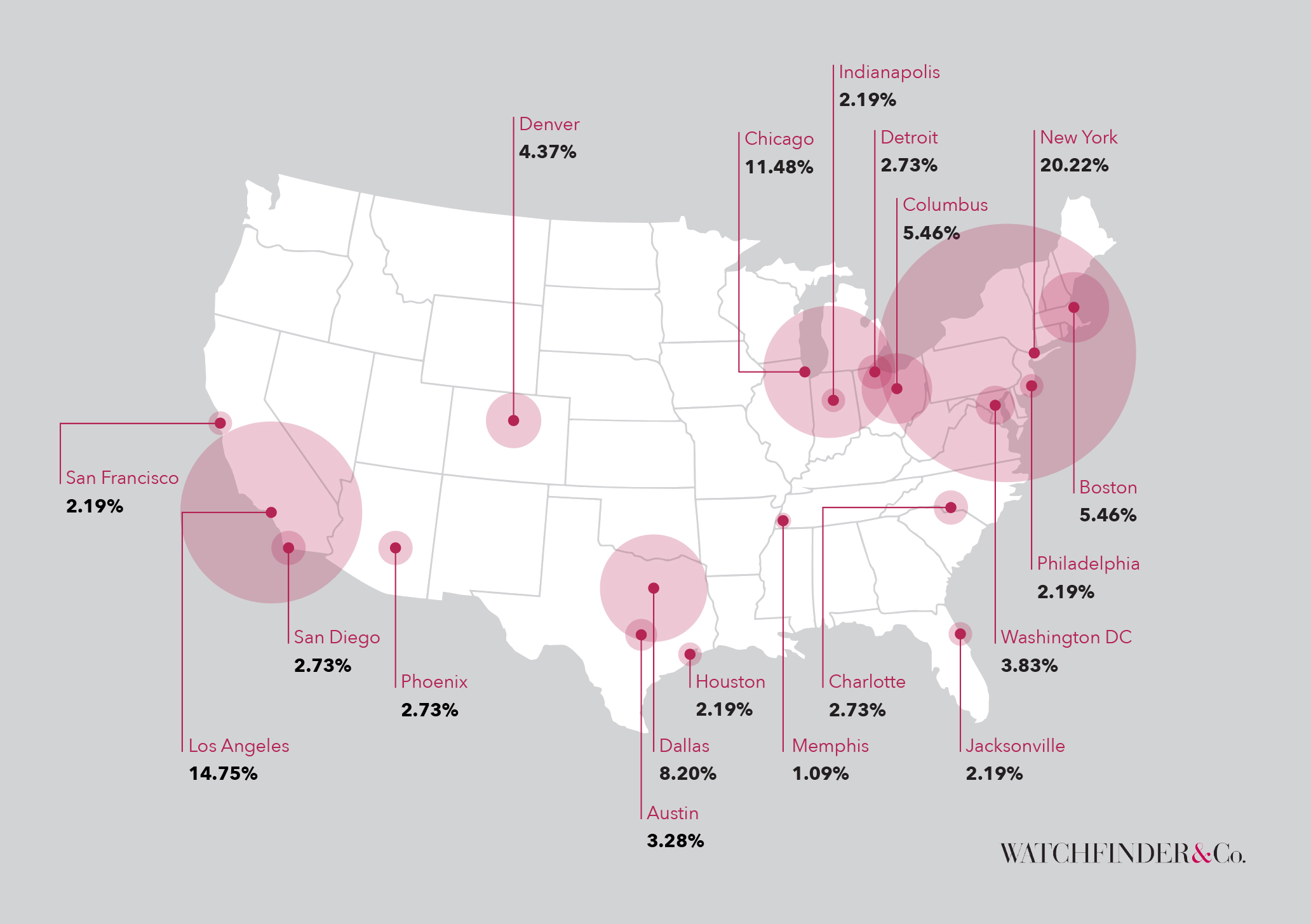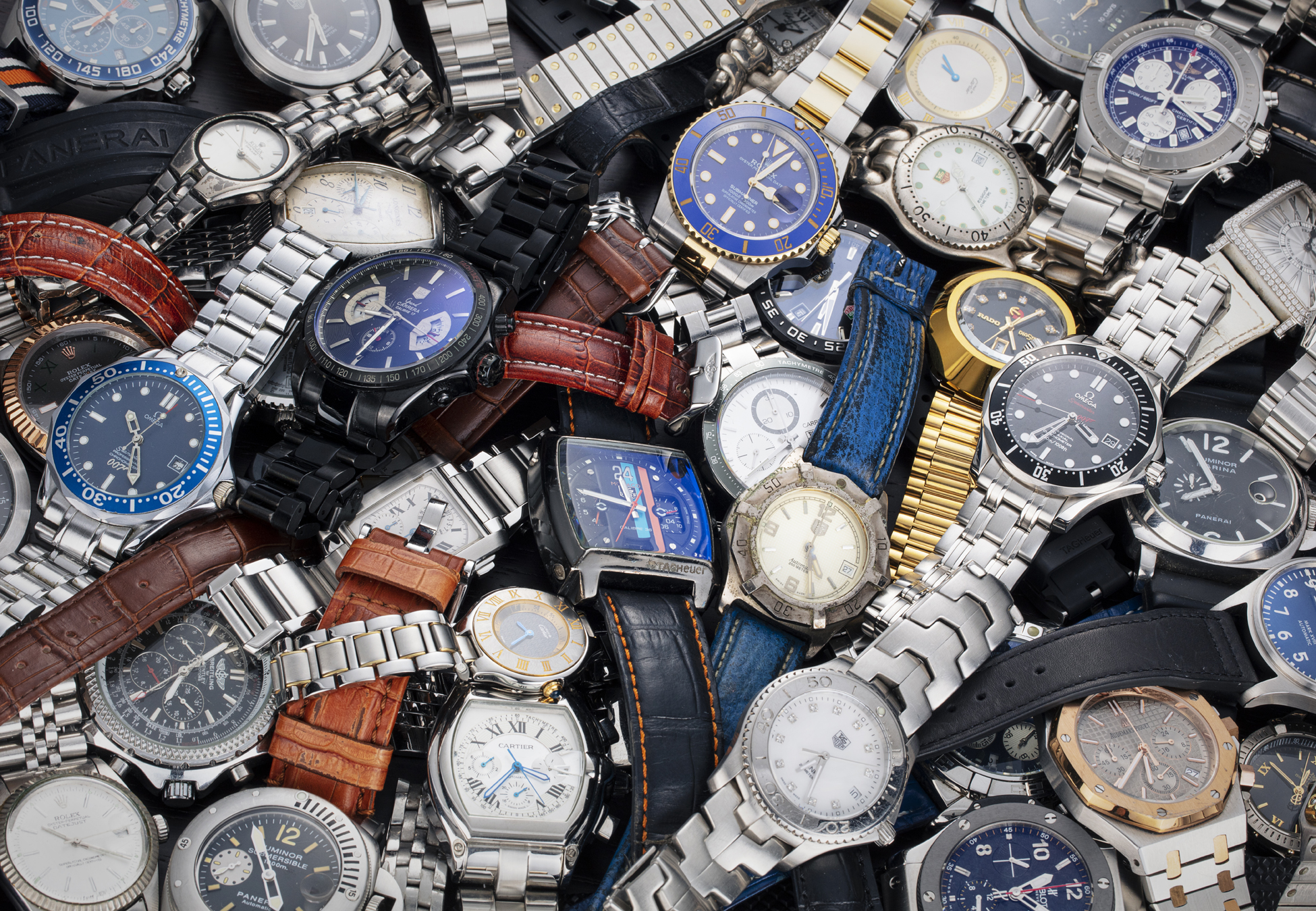New research has revealed that there are an estimated 23.3 million fake watches circulating the US market alone, according to a study conducted by luxury pre-owned watch specialist, Watchfinder & Co.
Of all the luxury watches sent to Watchfinder over the last year, at least half of those identified as fake, or contained fake parts, were Rolex.
The statistics show that one in five (24%) have been victims of purchasing a fake item and of these, 19% purchased are, in fact, fake watches.
This indicates that almost 10% Americans have been conned. The survey also found that almost half of the fakes purchased cost $500 dollars or more, yet the majority of Americans (58%) said they would still prefer to pay more for an authentic item.
In response to this, Watchfinder is calling on consumers to ‘shop smart’ as the growth in counterfeit watches and so called ‘super fakes’ flood the US market.
The pre-owned watch specialist is on a mission to campaign against fake watches, urging pre-owned traders, retailers and marketplaces to clarify and publicly declare their authentication policies, processes and credentials.
The call comes as the study showed 59% of respondents said they found it challenging to buy legitimate designer items beyond dedicated brand retailers.
Watches now account for almost 20% of all counterfeit sales, as scammers are making replicas look more convincing than ever thanks to developments in, and accessibility to, tech, including 3D printers and CNC machines.

This, combined with the wealth of knowledge fake manufactures have accumulated over the years, means ‘super-fakes’ are being produced with increasing aesthetic accuracy.
Watchmakers has observed that five years ago, around 80% of all counterfeit watches that were sent into their stores and service centres were easily identifiable at first glance, with only 20% needing closer inspection.
Today, approximately 80% are classified as super-fakes and require closer inspection, with only 20% standing out as obvious forgeries.
Although counterfeit watches are looking increasingly like the real deal, the expert technology and functionality that comes from a genuine timepiece cannot be replicated.
The research shows that 15% of fake watches broke after only a small amount of usage.
There are three types of fake watches to watch out for. It is not just completely fake watches that pose a problem, there are also legitimate watches that are made up of partially fake parts and passing them off as wholly authentic.
The top three most common fake parts found in watches are bracelet or links, dial and clasp.
The third type is known as a “frankenwatch”, where the parts are all real made up of different watches of the same type.
Frankenwatches accounted for 21% of fake watches purchased in the US, and recently hit the headlines due to a franken-Omega which sold for 3.1 million at auction and Maroon 5’s Adam Levine being caught out by internet sleuths.
Arjen van de Vall, CEO of Watchfinder & Co, said: “Purchasing a luxury watch is a really special moment and something that often involves a significant amount of consideration and investment, so you can imagine the devastation people feel, if they discover the watch they’ve purchased turns out to be a fake.
“This is why we are encouraging all pre-owned watch traders, retailers and marketplaces to publish their authentication policies, processes and credentials, as we do, so consumers regain faith in a sector blighted by cowboys and crooks.
“At Watchfinder we have a zero tolerance policy on counterfeits. Every watch that gets sent to us, must go through a rigorous 60 step inspection and authentication process at one of our service centers, by an expert panel of authentication experts before any valuation, service or sale can be completed.
To bring awareness to this worrying growing trend, Watchfinder has launched an interactive ‘Spot the Fake’ Game.
The online game takes consumers through different watches to guess which one is fake or real to highlight how difficult it can be to spot a fake.

